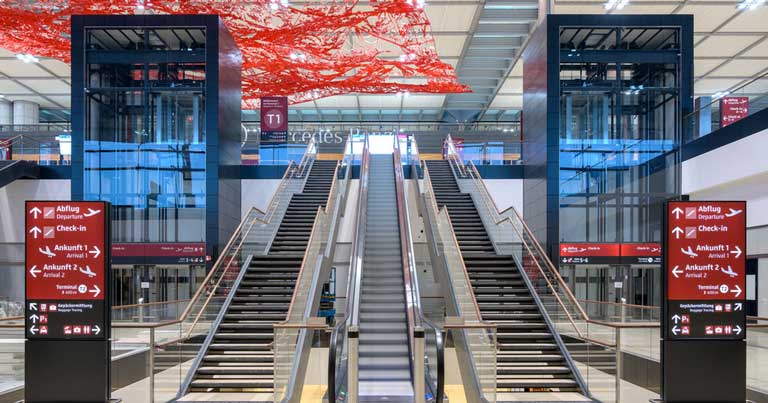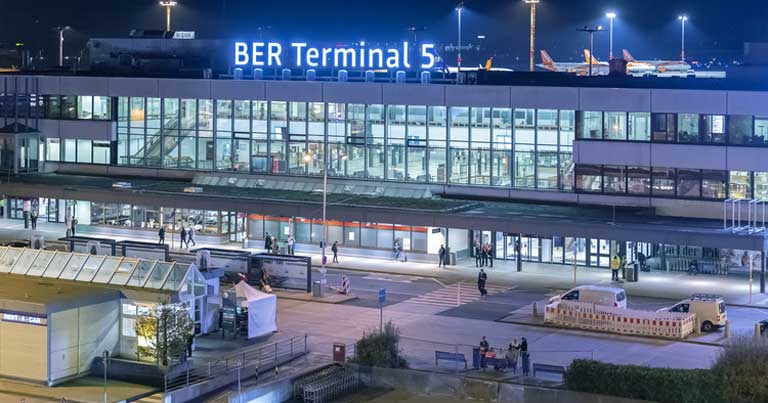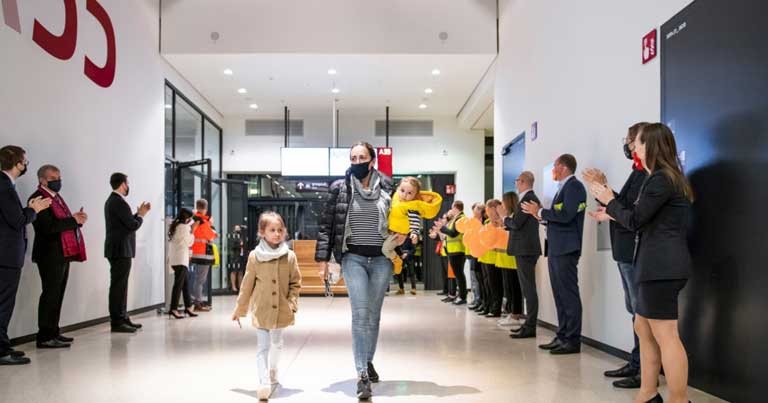
The new Terminal 1 at Berlin Brandenburg Airport Willy Brandt (BER) began regular operations on Sunday 1 November 2020, after nearly a decade of delays.
Airlines including easyJet, Eurowings and Vueling have now moved to BER Terminal 1 with further airlines, including Lufthansa with Austrian, Swiss, and Brussels Airlines, moving in the third and final wave of relocations.
Engelbert Lütke Daldrup, CEO, Flughafen Berlin Brandenburg GmbH: “With Berlin Brandenburg Airport Willy Brandt, eastern Germany can now rely on airport infrastructure that will serve as a solid basis for the coming decades. The people here in the German capital region had to wait a long time for this day. Our customers, that is the passengers and airlines, will find professional standards at BER: good accessibility by train and car, reliability and safety in handling even under Coronavirus conditions, optimal service on the ground and in the air.”
The southern runway of Berlin Brandenburg Airport Willy Brandt (BER) has now also opened with the landing of Qatar Airways flight QR81 from Doha on 4 November 2020. The commissioning of the southern runway also marks the start of night flying restrictions at BER as well as of the six-month deadline for the closure of Tegel Airport.

BER’s two parallel runways can be operated independently thanks to the lateral distance of 1,900 metres. The northern runway was previously in operation as part of the former Schönefeld Airport, the current Terminal 5 of BER. With the airport’s expansion as part of the development of the new airport of the German capital region, the current northern runway was extended from 3,000 to 3,600 metres.
The airport covers a total area of 1,470 hectares, the equivalent of around 2,000 football pitches. Terminals 1 and 2 are located between the two parallel runways, while Terminal 5 is in the northern area.
The new airport concentrates all air traffic in the German capital region in one location with a total capacity of over 40 million passengers per year. Around 25 million passengers can be handled at Terminal 1. The airport’s modern infrastructure will allow for a significant increase in long-haul services and connecting traffic in the future.
Walk-in COVID-19 testing facility

The airport is also ensuring safe travel for all passengers with the opening of a new walk-in COVID-19 testing facility in partnership with Centogene and Lufthansa.
In addition to departing travellers who need a valid coronavirus test result at their destination, as well as arriving passengers at BER, the general public in the Berlin area can also get tested. The COVID-19 testing facility is located centrally in the arrival area Terminal 1 of BER Airport. Individuals interested in taking a SARS-CoV-2 test can register via CENTOGENE’s secure Corona test portal or directly at the testing facility without needing an appointment. After a sample is collected via a throat swab by a healthcare professional, the results will be delivered within 24 hours through the web-based portal.
“We are excited to be opening our fourth airport test centre and to play such an important role in supporting a network of flights from Berlin. Since June, we have carried out hundreds of thousands of tests, and the demand for COVID-19 testing continues to rise,” said Dr. Volkmar Weckesser, Chief Information Officer at CENTOGENE. “Travelling is vital for both the global economy and societies, and by working together with BER and Lufthansa, we are able to continue supporting large-scale testing based on our proven blueprint for reliable, widespread testing.”
Christoph Leffers, Head of Task Force Testing, Lufthansa Group, added: “We pursue the goal of enabling corona-free travel through our COVID-19 test strategy and to make a contribution to society as a whole. We are convinced that this is the only right way to further expand the established test infrastructure at the airports, and we are pleased about the opening of the new test centre at the newly opened Berlin Airport – BER. The cooperation between Lufthansa and CENTOGENE, which is continuously expanding its capacities, serves as a benchmark for a successful test model here.”






